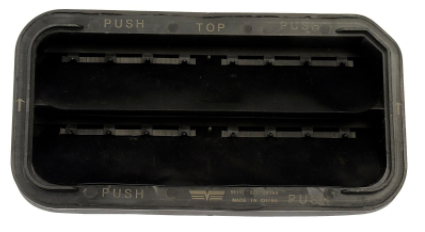We've been noticing that after a couple weeks with this car, we've been having some strange ear issues, like popping. At first, I thought it might just be a sinus thing, but then I really started noticing what feels like excessive cabin pressure, almost a booming. Does anybody else have this?
You are using an out of date browser. It may not display this or other websites correctly.
You should upgrade or use an alternative browser.
You should upgrade or use an alternative browser.
Cabin air pressure
- Thread starter 100cars
- Start date
Disclaimer: Links on this page pointing to Amazon, eBay and other sites may include affiliate code. If you click them and make a purchase, we may earn a small commission.
swathdiver
Full Access Member
The earlier models in the previous generation had this issue. Turns out it was a lack of adhesive in the roof bows that was the culprit.We've been noticing that after a couple weeks with this car, we've been having some strange ear issues, like popping. At first, I thought it might just be a sinus thing, but then I really started noticing what feels like excessive cabin pressure, almost a booming. Does anybody else have this?
Wow, that's interesting! Apparently the problem existed all the way up to 2020 models in some cases.The earlier models in the previous generation had this issue. Turns out it was a lack of adhesive in the roof bows that was the culprit.
Does anybody else have this on the 2021?
Quark
Full Access Member
Would like to know the physics behind this. How do a few pin hole leaks in a massive positive pressure atmosphere cause variations great enough to be felt in the inner ear.
iamdub
Full Access Member
Would like to know the physics behind this. How do a few pin hole leaks in a massive positive pressure atmosphere cause variations great enough to be felt in the inner ear.
It's not pinhole leaks. It's the roof skin not being glued down to the reinforcement ribs in the ceiling. The wind going over the roof at speed creates low pressure, sucking the roof upward. The metal naturally tries to retain its shape so its trying to pull downward. The cycle continues and is at its worst at a particular speed. It's not much movement. But, when you have so many square feet of surface moving, you don't need much excursion. The roof is essentially a giant low-frequency transducer (a "subwoofer").
Rdr854
Full Access Member
Is the booming issue more pronounced with vehicles with or without sunroofs? Reason I ask is that I did not experience this with my Suburbans (none of which had sunroofs).
MelloYello95
Full Access Member
- Joined
- Mar 25, 2021
- Posts
- 100
- Reaction score
- 129
We are not experiencing this in ours. We do not have a sunroof.
Quark
Full Access Member
Wouldn't a sunroof reduce the amount of the roof area that could react to pressure?
Do all or some of these models have active noise reduction?
Wasn't there more than one cause attributed to this problem, what about unbalanced drive shafts?
I totally buy the transducer analogy but find it hard to believe GM would repeat the same mistake. Am I being naive, perhaps.
Do all or some of these models have active noise reduction?
Wasn't there more than one cause attributed to this problem, what about unbalanced drive shafts?
I totally buy the transducer analogy but find it hard to believe GM would repeat the same mistake. Am I being naive, perhaps.
G-Frog
Member
The only time I have anything similar to this is when one of the windows is open a bit. For my Yukon and my previous 2018 Traverse, there always has to be at least 2 windows open at the same time to prevent negative pressure in the cabin.
Most vehicles have a Cabin Pressure Relief Valve to prevent over-pressure situations inside the cabin. But these are usually one way out. They don't let air into the cabin. Incoming air usually comes from the HVAC system.
If the Cabin Pressure Relief Valve is blocked/broken somehow, the cabin could overpressure, particularly with higher fan settings. This could potentially cause ear pressure issues.
You would also notice that it's a little more difficult to close a single door due to overpressure in the cabin. These are most often located on one of the rear quarters near the liftgate. But I'm not sure on the 2021s.

Most vehicles have a Cabin Pressure Relief Valve to prevent over-pressure situations inside the cabin. But these are usually one way out. They don't let air into the cabin. Incoming air usually comes from the HVAC system.
If the Cabin Pressure Relief Valve is blocked/broken somehow, the cabin could overpressure, particularly with higher fan settings. This could potentially cause ear pressure issues.
You would also notice that it's a little more difficult to close a single door due to overpressure in the cabin. These are most often located on one of the rear quarters near the liftgate. But I'm not sure on the 2021s.

Last edited:
